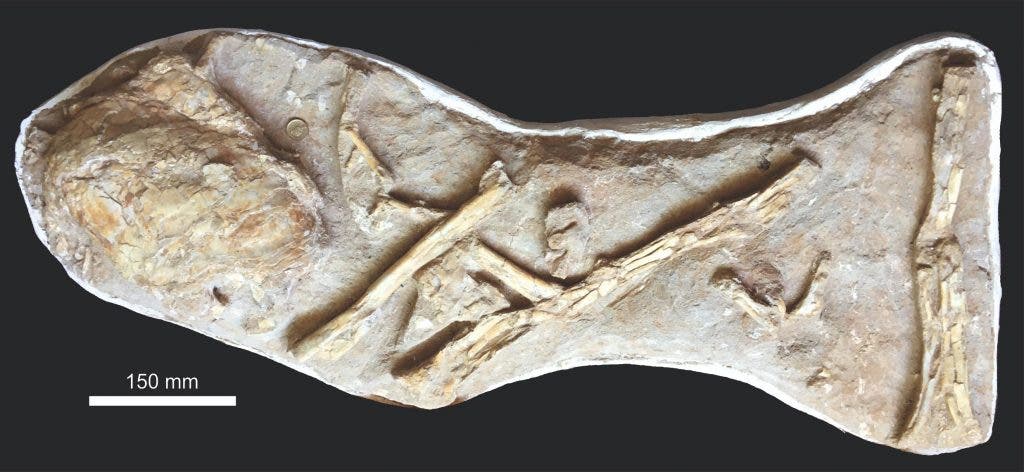Researchers at the University of Portsmouth have run into the fossilized remains of an ancient bony fish — the coelacanth — out of sheer luck. Or bad luck, depending on who you’re asking.

In a break from our traditional story path for Fossil Friday, there won’t be much talk about anything being ‘unearthed’ today. That’s because the fossil in question is part of a private collection from a London aficionado. It was identified as having belonged to a species of coelacanth by Professor David Martill, a paleontologist from the University’s School of the Environment, Geography and Geosciences, after he was asked to take a look at the specimen and determine its origin.
Although the discovery is quite exciting from an academic point of view, the collector was (reportedly) less than thrilled: they wanted a pterosaur skull, but got a bony fish.
Old fish
“The collector was mightily disappointed he didn’t have a pterosaur skull, but my colleagues and I were thrilled as no coelacanth has ever been found in the phosphate deposits of Morocco, and this example was absolutely massive!” explains Professor Martill.
“The thin bony plates were arranged like a barrel, but with the staves going round instead of from top to bottom. Only one animal has such a structure and that is the coelacanth — we’d found a bony lung of this remarkable and bizarre-looking fish.”
The fossil corresponds to a fish that’s similar in size to a great white shark of today and is the largest fossil of its kind to ever be discovered by accident. Although they’ve been swimming around since the dinosaurs were still roaming the Earth, coelacanths are still alive to this day, although they are quite rare and rarely seen. They’re also quite endangered.
The collector bought this fossil thinking it could have been part of a pterodactyls’ skull. Professor Martill instead found that the specimen was composed of numerous, thin bone plates, not a single piece, as you’d see in a skull. Prof. Martill worked together with Dr. Paulo Brito of the State University of Rio de Janeiro, a leading Brazilian paleontologist, to study the fossil. Brito, an expert on coelacanths and their lungs, admitted to being ‘astonished’ at how large this specimen was.
It has been embedded in a block of phosphate with a plaster backing, and everything was then coated in lacquer — this, the two explain, caused the fossils to take a brown hue. It was found next to a pterodactyl specimen (which is probably why the collector thought it was part of that animal). Although they turned out to be completely different species, this does help give us a rough estimate of when the fish lived: around 66 million years ago, in the Cretaceous era.

Image credits University of Portsmouth.
Following an initial investigation of the specimen, its owner offered to give the researchers the remains of the bony lung off the slab, which they accepted. Later, they removed the lacquer using specialized equipment (mostly dental tools and fine brushes) to enable more thorough research on the fossils.
The very large size of the lung belonging to this animal suggests that it was a very, very big individual during its day — around five meters in length, the team reports. This is much larger than the coelacanths of today, which grow to around two meters in length, at most.
“We only had a single, albeit massive lung so our conclusions required some quite complex calculations,” Professor Martill explains. “It was astonishing to deduce that this particular fish was enormous — quite a bit longer than the length of a stand-up paddleboard and likely the largest coelacanth ever discovered.”
The fossil will be given back to the Moroccan government, the owner explains, and will most likely be added to the collections in the Department of Geology at Hassan II University of Casablanca.
The paper “A marine Late Cretaceous (Maastrichtian) coelacanth from North Africa” has been published in the journal Cretaceous Research.


